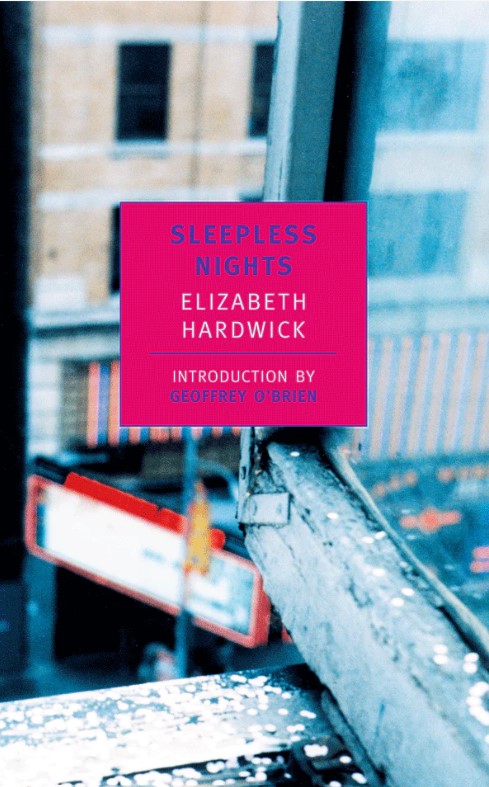About
Author: Elizabeth Hardwick (USA)
Genre: Experimental
Setting
Place: USA
Time: 1920-70s
My Rating (see what this means)
My Subjective Rating: 5
My ‘Objective’ Rating: 4.4
Introduction

When I first read ‘Sleepless Nights’ by Elizabeth Hardwick, I noticed 2 things –
- I didn’t understand large parts of the book, and was unable to appreciate it as much as I would have liked to, and
- I still throughly enjoyed reading it
It was difficult to understand because – while the premise was simple in that an old woman is looking back at her life, the narrative is scattered across the events of her life in no particular order and no conventional story arc. I still enjoyed reading it because it is marvellously well-written – describing people, events and experiences with such beauty that you can’t help but re-read a paragraph immediately after reading it.
So, I always knew I was going to read the book again in some years. And this time I was going to be better prepared to understand it – with my laptop ready to track the contours of the narrator’s life in an spreadsheet. (See below for reference).
So now, in my second reading – I again thoroughly enjoyed the book and also understand it a lot better. And I also know I will read it again in a few years. (See below for the plan)
Synopsis
The author’s namesake – Elizabeth, the narrator, now in her 50s/60s, looks back at her life – perhaps as a means to tackle loneliness or perhaps to evaluate the point of her living. She remembers (or pretends to remember) people who left (or failed to leave) a lasting impression on her. There is no plot to speak off, but just the distorted memories of a broken old woman in a squalid nursing home.
More interesting is the fact that while much of the book is ‘made up’, it closely followers the contours of the author’s life and there are instances where we cannot be sure if it is the author or the narrator that is speaking to us. It only adds to the beauty of the reading experience.

Review
(Has spoilers, if spoilers are possible for this book)
My excel allowed me to take a bird’s eye view of the book, and each and every character in the book – whether rich or poor, successful or struggling, alone or in relationships, seems to ultimately have had a life that was disappointing in a way. There were early deaths, unhappy marriages, blue-limpid boredoms, dour envy, venereal diseases, ‘enormous complications’.
The life of the narrator comparatively – despite the abortions, the deaths of her brothers, the heartbreaks – seems to be pleasant even – for all its marvellous un-exceptionalisms. And that is despite being told that she had gone for ‘lighter tones’ when talking about more painful memories. She is honest about her omissions – and explains to the reader why for instance – she refuses to make her father a character in her story (because she can see him only as a character in literature, already recorded). She also confesses that the book is, in part, an exercise to understand/think about her mother (i.e. to wonder what (Elizabeth) would be forgiven for remembering or imagining).
Or perhaps it is that she (Elizabeth herself) is the subject?
The book is such a wonderful read is because the narrator (or author) is figuring out while writing the book what the point of the exercise is. And in her struggles she manages to capture life as it is in the book.
I do not believe they are thinking of lost youth. I do not believe they are afraid of death. I doubt whether they are wondering if they love each other or whether they are happy. It does not seem accurate to call this, whatever it is, one or the other. Nevertheless they are alive, full of opinions, of distastes, ideas, even. Anyway the night is good because it leads to the day, to shoes and stockings, to coffee, to drudgery and repetition, especially for her who perhaps looks forward to getting it done.
My Third Reading
The Sleepless Nights, I noticed (similar with some of its sister books Speedboat by Renata Adler, or Bluets by Maggie Nelson) lost some of their charm for me towards the second half. I doubt it had to do anything with the writing itself – but was possibly because –
- As I picked up pace, after becoming more sure-footed with the unique narrative style, I started spending less time really appreciating the writing
- Or the writing just got repetitive
So when I read the book again in a few years, I plan to test this hypotheses by starting to read somewhere in the middle – and read it in a more flexible order. I am sure it would still be a great joy reading this.

Reference Guide for the Narrator’s Life
- 1930s: Childhood in Kentucky – her siblings, Derby, her mother’s femaleness, communists and pedophiles
- Early 1940s: At Columbia University, Staying at a single ladies hostel
- Late 1940s: At Hotel Schuyler, as a ‘couple’ with a fastidious gay man
- 1950: In Maine, with a maid who will be disappointed in love
- 1951: In Amsterdam, with a cassanova Dr. Z, also to be disappointed later in love
- 1954: In Boston, with another maid who will be disappointed in love
- 1960s: New york, she was then a we
- 1973: New York, no longer a we
- Present: Now a broken old woman in a squalid nursing home.
Picture Credits:
1. Cover: Tumi Robe Nirobe | Instrumental | Rabindranath | Belaseshe | Esraj | Shubhayu | Rabindra sangeet. Picture taken from a great music video
2. Elizabeth Hardwick, 1978